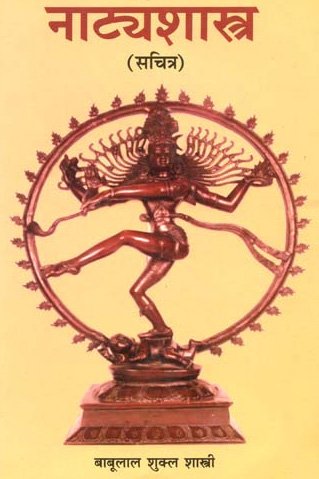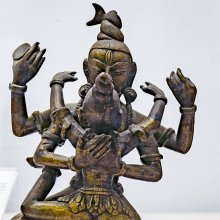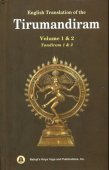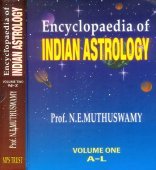Void: 3 definitions
Introduction:
Void means something in Buddhism, Pali, Hinduism, Sanskrit. If you want to know the exact meaning, history, etymology or English translation of this term then check out the descriptions on this page. Add your comment or reference to a book if you want to contribute to this summary article.
Images (photo gallery)
In Hinduism
Yoga (school of philosophy)
Source: ORA: Amanaska (king of all yogas): A Critical Edition and Annotated Translation by Jason BirchVoid (meditation) forms part of the various Teachings or Techniques (saṅketa) on Layayoga, according to the Dattātreyayogaśāstra verse 21-26.—Note: The Dattātreyayogaśāstra’s techniques (saṅketa) of Layayoga can be summarised as meditation on the void, gazing on the tip of the nose, meditating on the back of the head, gazing between the eyebrows, meditating on the forehead and brow, meditating on the two big toes and lying on the ground like a corpse.

Yoga is originally considered a branch of Hindu philosophy (astika), but both ancient and modern Yoga combine the physical, mental and spiritual. Yoga teaches various physical techniques also known as āsanas (postures), used for various purposes (eg., meditation, contemplation, relaxation).
Natyashastra (theatrics and dramaturgy)
Source: Shodhganga: Elements of Art and Architecture in the Trtiyakhanda of the Visnudharmottarapurana (natya)Void is associated with Kolapadma-hasta: one of the twenty-two Single-hand Gestures (in Indian Dramas) (known as asaṃyuktahastas), according to the Viṣṇudharmottarapurāṇa, an ancient Sanskrit text which (being encyclopedic in nature) deals with a variety of cultural topics such as arts, architecture, music, grammar and astronomy.—In the Viṣṇudharmottarapurāṇa, it kolapadma-hasta said that to say no, to denote void and non existence, this hand posture is used. In the Nāṭyaśāstra, the kolapadma-hasta posture is suggestive of indicating prevention, sense of the sentences like “of whom are you” and “it is not”. Moreover, in case of a women’s reference of herself, this hand gesture is used.

Natyashastra (नाट्यशास्त्र, nāṭyaśāstra) refers to both the ancient Indian tradition (shastra) of performing arts, (natya—theatrics, drama, dance, music), as well as the name of a Sanskrit work dealing with these subjects. It also teaches the rules for composing Dramatic plays (nataka), construction and performance of Theater, and Poetic works (kavya).
In Buddhism
Tibetan Buddhism (Vajrayana or tantric Buddhism)
Source: ORA: Amanaska (king of all yogas): (Tibetan Buddhism)(That which is) (completely) Void is denoted in the Sanskrit language as Sarva-Śūnya, according to the thirty-third chapter of the Saṃvarodayatantra: a Buddhist explanatory Tantra of the Cakrasaṃvara cycle.—Accordingly, while describing the no-mind meditation: “[...] Free from meditation and concentration and beyond [both] Yoga and reasoning, he leads people to absorption in ‘suchness’, when the mind becomes steady in awareness. It is [e.g., void (sarva-śūnya)] [...] inexpressible by words and even beyond the sphere of the mind”.

Tibetan Buddhism includes schools such as Nyingma, Kadampa, Kagyu and Gelug. Their primary canon of literature is divided in two broad categories: The Kangyur, which consists of Buddha’s words, and the Tengyur, which includes commentaries from various sources. Esotericism and tantra techniques (vajrayāna) are collected indepently.
See also (Relevant definitions)
Starts with: Void Deliverance.
Full-text (+1307): Shunya, Rikta, Gunahina, Gu, Viguna, Riktaka, Tuccha, Kha, Ashunya, Reku, Shunaka, Nirakara, Bhavashunya, Nigarva, Nirabhasa, Niranjana, Viragin, Nirvisha, Nishkritrima, Niriha.
Relevant text
Search found 240 books and stories containing Void; (plurals include: Voids). You can also click to the full overview containing English textual excerpts. Below are direct links for the most relevant articles:
The Agni Purana (by N. Gangadharan)
Chapter 214 - The system of veins in the body and their benefits
Chapter 317 - The different kinds of mantras of Śiva
Chapter 233 - The propitious periods for undertaking an expedition (yātrā-maṇḍala)
Atharvaveda and Charaka Samhita (by Laxmi Maji)
Atisāra (diarrhea) according to Caraka < [Chapter 4 - Diseases and Remedial measures (described in Caraka-saṃhitā)]
Grahaṇī (sprue-syndrome) according to Caraka < [Chapter 4 - Diseases and Remedial measures (described in Caraka-saṃhitā)]
Vivekachudamani (by Shankara)
Vasistha Dharmasutra (by Georg Bühler)
Yoga Vasistha [English], Volume 1-4 (by Vihari-Lala Mitra)
Chapter CXCV - Lecture on the enlightenment of understanding < [Book VII - Nirvana prakarana part 2 (nirvana prakarana)]
Chapter LXXXII - Description of the person of the god siva < [Book VII - Nirvana prakarana part 2 (nirvana prakarana)]
Chapter CCIV - Identity of abstract intellectuality and vacuity < [Book VII - Nirvana prakarana part 2 (nirvana prakarana)]
Stage < [July – September, 2000]
Rainbow in a Tear-Drop < [July – September, 1986]
Relationship < [July – September, 1983]
Related products


